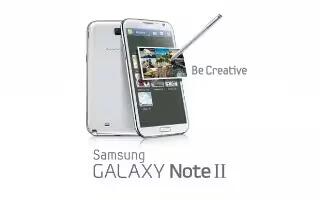Your Samsung Galaxy Note 2 lets you use a microSD card (also referred to as a memory card) to expand available memory space. This secure digital card enables you to exchange images, music, and data between SD-compatible devices. This section addresses the features and options of your devices SD functionality. The device has a USB SD card mode.
- microSD card storage: up to 2GB in size
- SDHC card storage: up to 32GB in size
- SDXC card storage: greater than 32GB in size
Using the SD Card on Samsung Galaxy Note 2
- There are several methods for using the SD card:
- Connecting to your PC to store files (such as music, videos, or other types of files and media).
- To activate the camera, video, music player, and other dependent media or applications.
Note: Your device can support memory cards of up to 64GB capacity.
SD card Overview
After mounting an SD card in the device you can use your computer to access and manage the SD card.
- Note: If access to the external SD card is not available, download and install the USB drivers.
- DO NOT remove a microSD card while the device is accessing or transferring files. Doing so will result in loss or damage of data. Make sure your battery is fully charged before using the microSD card. Your data may become damaged or lost if the battery runs out while you are using the microSD card.
Mounting the SD Card on Samsung Galaxy Note 2
- To store photos, music, videos, and other applications, you must mount (install) the SD card prior to use. Mounting the SD card establishes a USB connection with your computer.
- Press Home button > Menu key and then tap Settings > Storage.
- Tap Mount SD card.
Communicating with the SD card on Samsung Galaxy Note 2
- Insert the SD card into the external, SD card slot (For more information, refer to How to install the microSD on Samsung Galaxy Note 2.
- Verify the card is properly mounted.
Note: Your device is configured to be used as a storage/media device by default. If it does not respond properly, you will need to verify the Debugging mode is not enabled.
- Configure the device for USB storage mode connection by verifying Debugging mode is not enabled:
- Press Home button > Menu Key and then tap Settings > Developer options.
- Remove a check mark from the USB debugging field, if present.
- Connect the USB cable to the phone and connect the cable to the computer.
- Confirm the new mounted drive appears as a new drive on your computer. As soon as the connection is established a drive letter is assigned to the phones storage device.
- To disconnect the new drive, simply remove the USB cable from your device.
Unmounting the SD card on Samsung Galaxy Note 2
- Unmounting the SD card prevents corruption and damage to the SD card while removing it from the slot.
- Press Home button > Menu key and then tap Settings > Storage.
- Tap Unmount SD card > OK.
- After the SD card will be unmounted message displays and the Mount SD card now appears in the menu list, remove the SD card. For more information, refer to How to remove the microSD Memory Card on Samsung Galaxy Note 2.
SD card Memory Status on Samsung Galaxy Note 2
- To view the memory allocation for your external SD card:
- Press Home button > Menu key and then tap Settings > Storage.
- The available memory displays under both the Total space and SD card headings.
Erasing Files from the SD card on Samsung Galaxy Note 2
To erase files from the SD card using the device:
Ensure the SD card is mounted.
Press Home button > Menu key and then tap Settings > Storage > Mount SD card.
Tap Format SD card > Format SD card > Delete all to format the SD card. The SD card formats and erases all the data stored on it.
